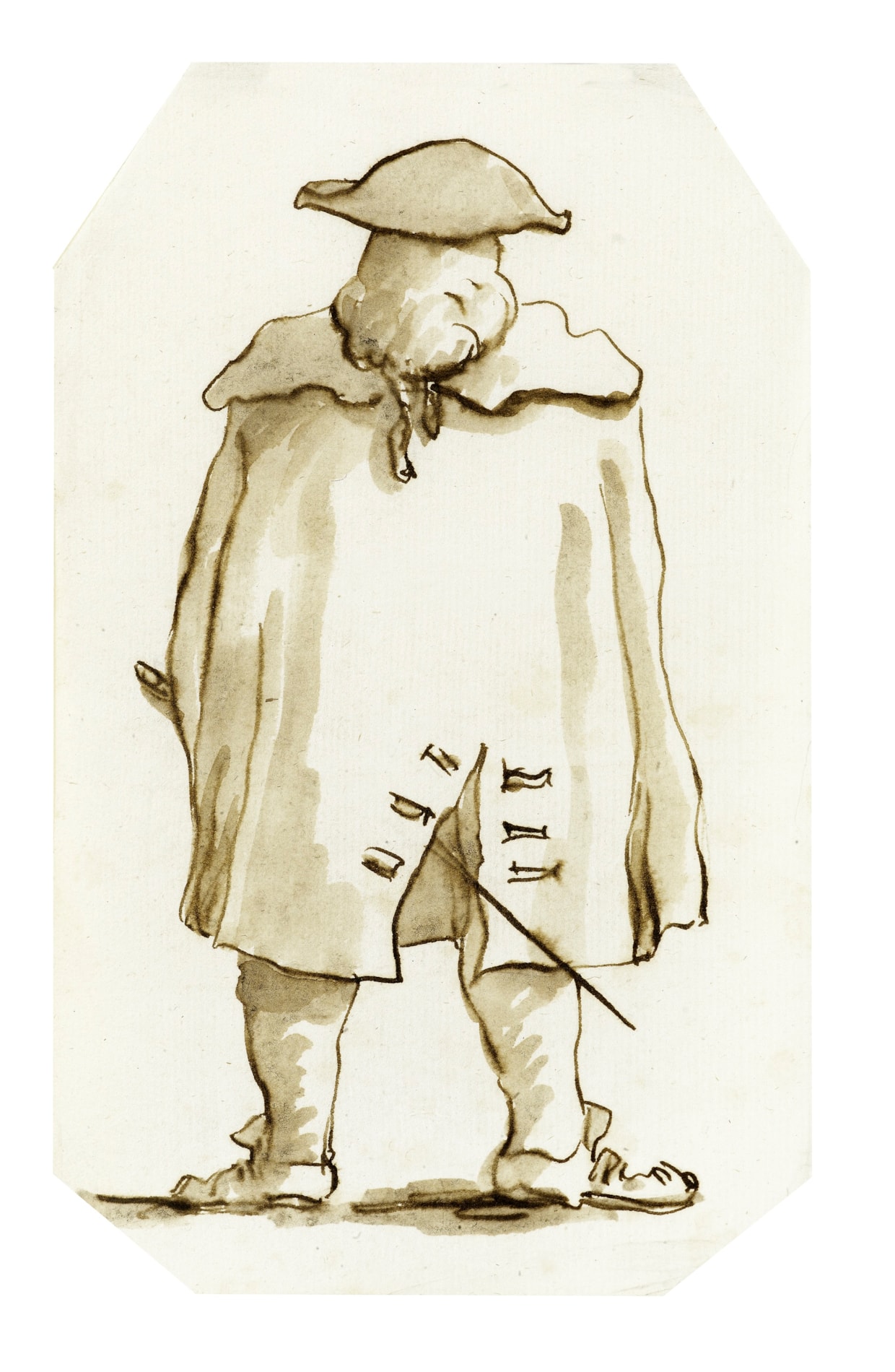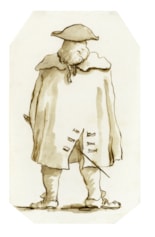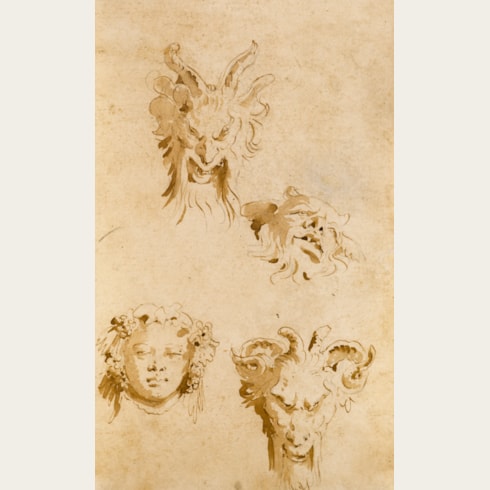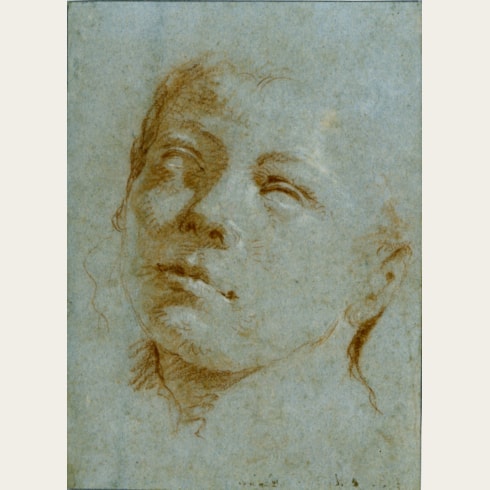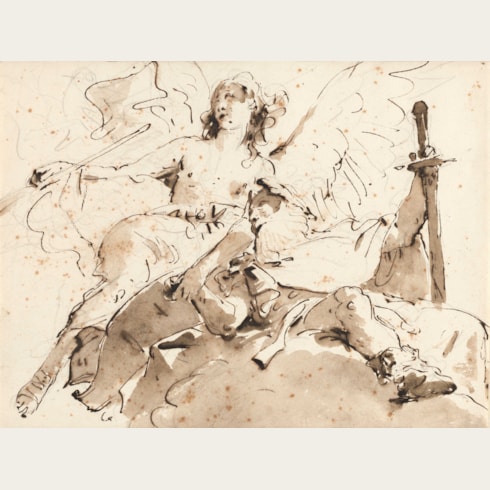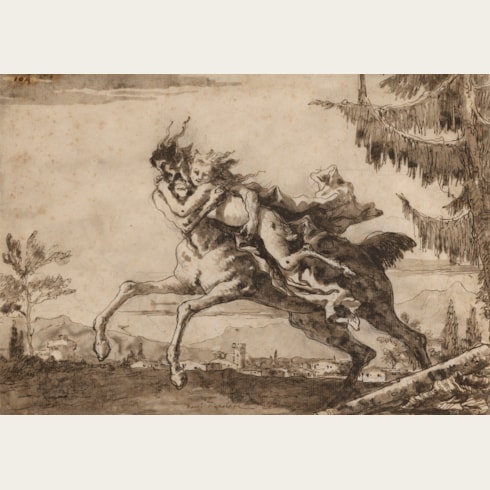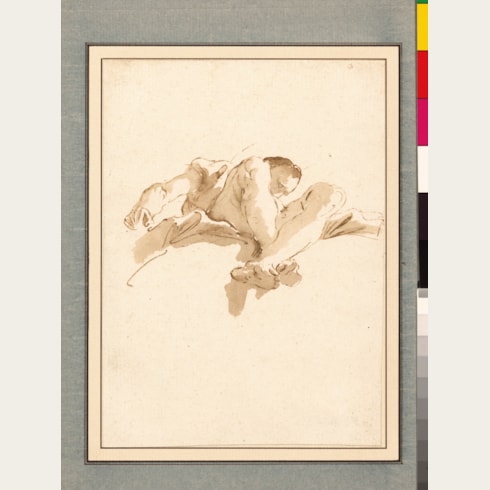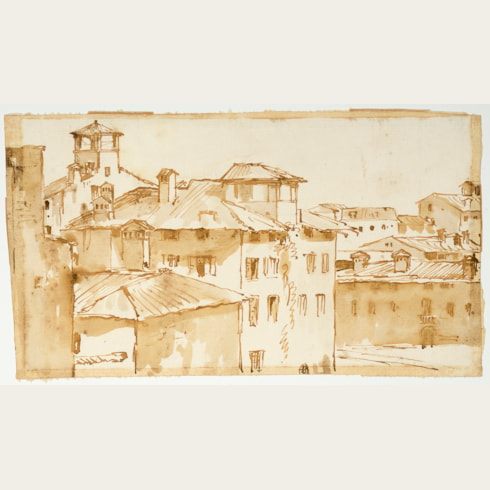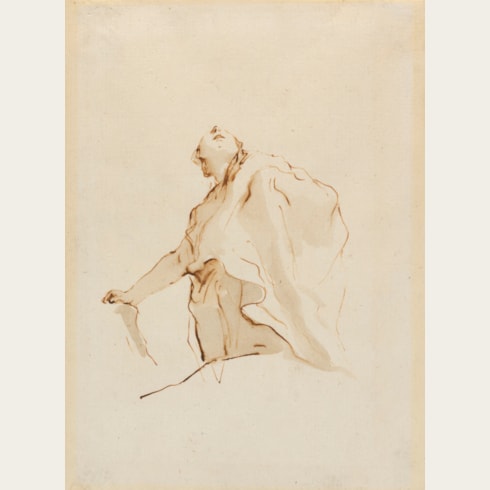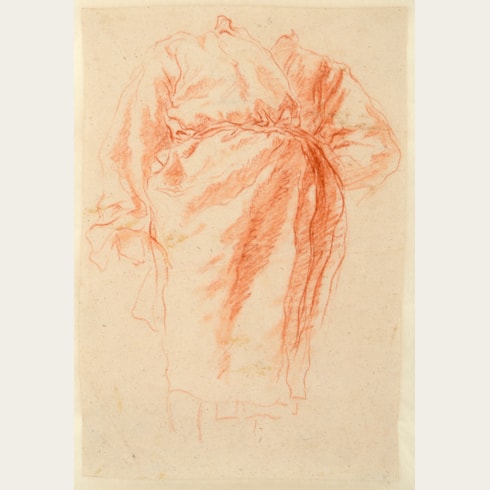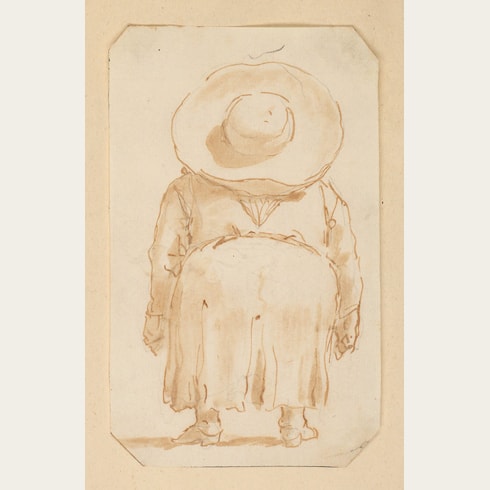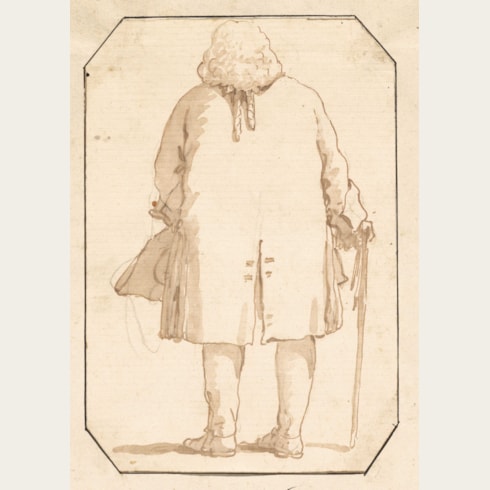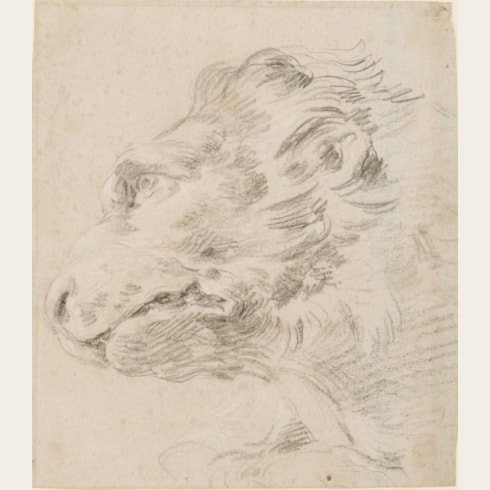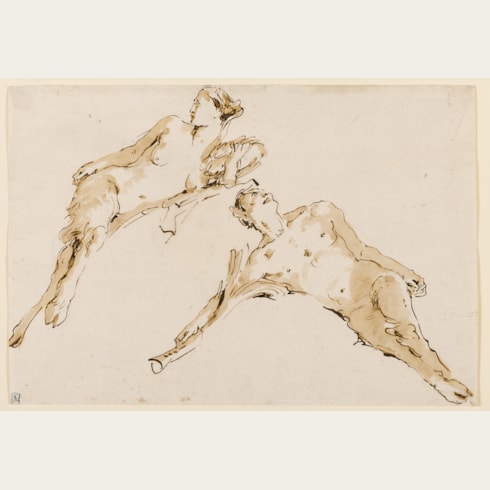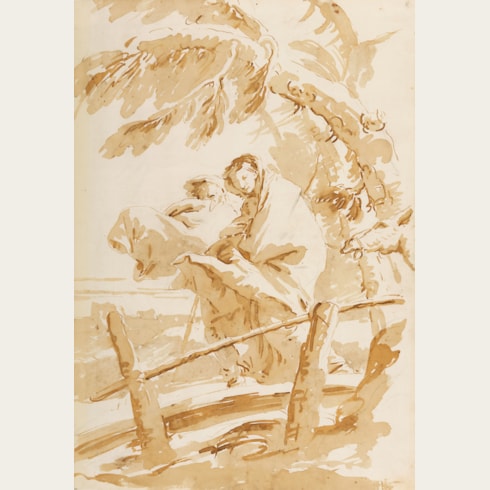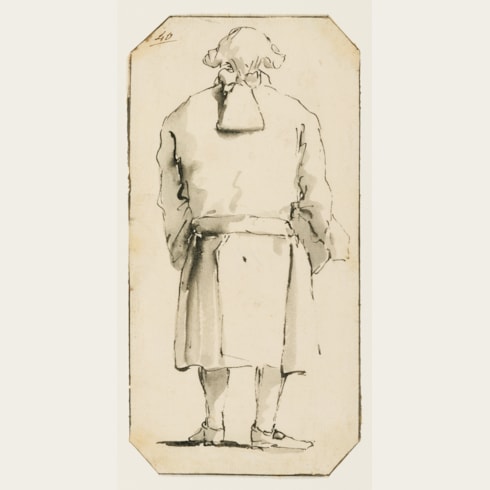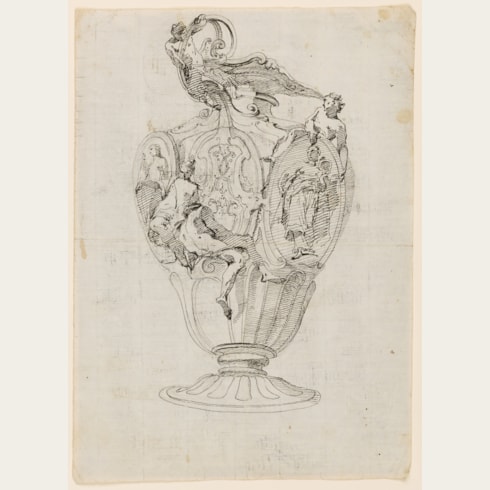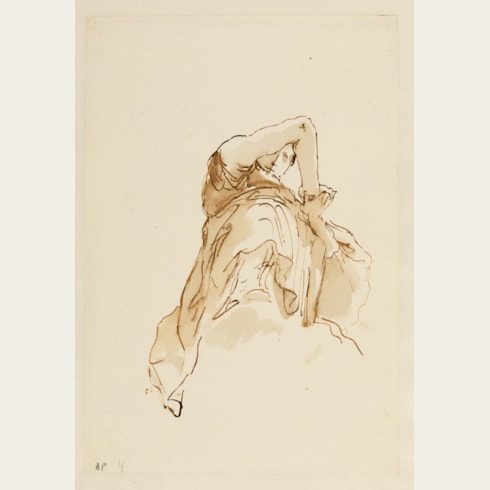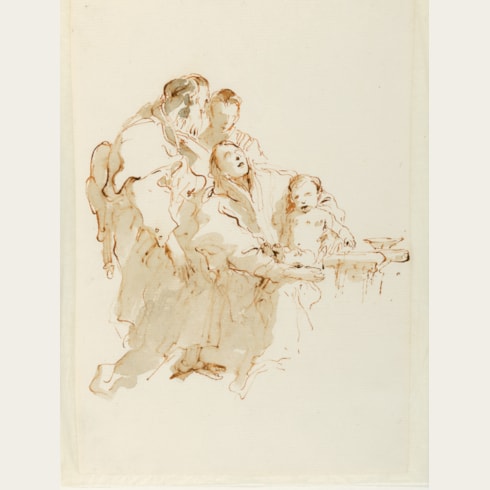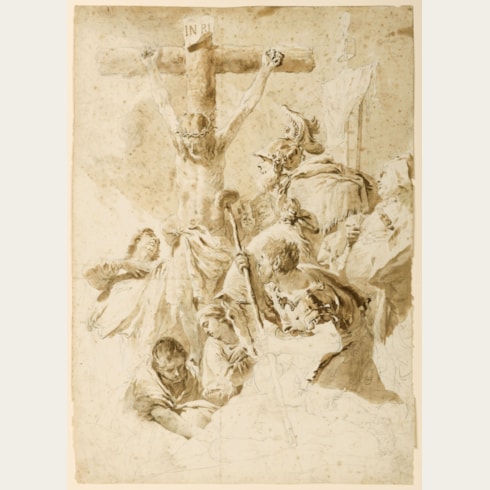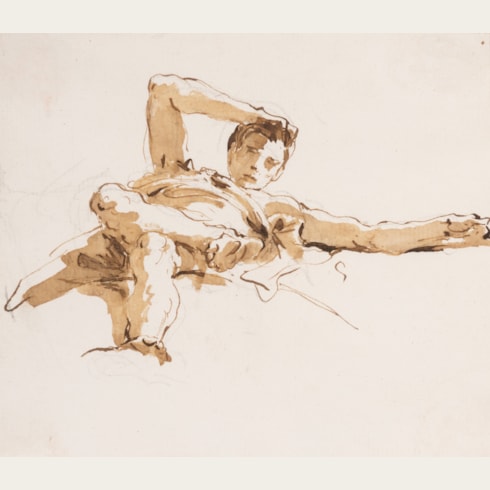Giovanni Battista TIEPOLO
(Venice 1696 - Madrid 1770)
A Caricature of a Man seen from Behind, with a Sword, Wearing a Cape and a Tricorne Hat
177 x 112 mm. (7 x 4 3/8 in.)
The present sheet may be presumed to have originated in the collection of the Conti Valmarana of Vicenza, which seems to have included a large number of Tiepolo caricatures. The drawings associated with the Valmarana collection are, for the most part, depictions of single figures, with most seen from behind. Some thirty-two of the caricatures from the Valmarana collection were acquired at an unknown date before 1959 by the dealer and collector Paul Wallraf (1897-1981), and of these fifteen are today in the Robert Lehman Collection at the Metropolitan Museum of Art in New York.
Giambattista Tiepolo’s caricatures have generally been dated to his last Venetian period, following his return from Würzburg in 1753, and before his departure for Spain in 1762. In many of these caricatures in which the man is seen from behind, the subject appears to be urinating. As one recent scholar has written of this type of lively caricature, ‘Tiepolo did not represent specific people but rendered generalized types that must have been immediately recognizable to contemporaries. Their gestures are minimal, the details of their clothes are understated, and indications of setting are scant. Here, even their faces are not shown, yet enough is communicated by their physiques, shoulders, stances, and costumes to distinguish types.’
The leading painter in Venice for much of his career, Giambattista Tiepolo was also undoubtedly one of the finest Italian draughtsmen of the 18th century. That his drawings were greatly admired in his lifetime is confirmed by contemporary accounts; indeed, as early as 1732 the writer Vincenzo da Canal remarked that ‘engravers and copyists are eager to copy his works, to glean his inventions and extraordinary ideas; his drawings are already so highly esteemed that books of them are sent to the most distant countries’. From the late 1730’s until his departure for Spain in 1762, Tiepolo enjoyed his most productive period as a draughtsman, creating a large number of vibrant pen and wash studies that are among the archetypal drawings of the Venetian Settecento. As one recent scholar has commented, ‘From the start of his career [Tiepolo] had enjoyed drawing as an additional means of expression, with equally original results. He did not draw simply to make an immediate note of his ideas, nor to make an initial sketch for a painting or to study details; he drew to give the freest, most complete expression to his genius. His drawings can be considered as an autonomous artistic genre; they constitute an enormous part of his work, giving expression to a quite extraordinary excursion of the imagination; in this respect, Tiepolo’s graphic work can be compared only with that of Rembrandt.’
Tiepolo’s drawings include compositional studies for paintings and prints, drawings of heads, figure studies for large-scale decorations, landscapes and caricatures, as well as several series of drawings on such themes as the Holy Family. Many of these drawings were bound into albums by theme or subject, and retained by the artist in his studio as a stock of motifs and ideas for use in his own work, or that of his sons and assistants.
Provenance

